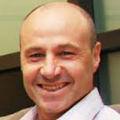Industry funds can benefit from financial planning mess
(Pictured: Tony McDonald)
by Greg Bright
There are big troubles facing the bank-aligned financial planning groups, from litigation to regulation to disenchantment by the clients and the planners themselves. Whether or not this leads to a more independent planning model, as some are predicting, is uncertain. Super funds can take advantage of the mess.
Ironically, it was the original FOFA proposal from the previous government which prompted much of the aggregation which has taken place among financial planning practices in the past few years. For many of the mid-size firms the looming restrictions and changes to their revenue models due to banning commissions led to the take-up of offers from the four banks and AMP to join their dealer groups. They make up 80 per cent of the planner market.
Now, with the law suits, ASIC and other inquiries and continual bad press, for the bank groups especially, and with less concern about FOFA under the current government’s changes, it seems the tide has turned. The planners’ trade press has over the past few months been predicting an exodus from the bank dealer groups back to “independence”.
According to T&C Consulting, a management consulting firm specializing in financial planning, disaggregation began to be evident by mid-way through last year. An important part of the new trend, though, is technology rather than politics.
While T&C believes that the deployment of new technologies is an important part of the trend, there is more to it than that. And the independent dealer groups, which hope to provide new homes for disaffected bank-aligned planners, need to look at doing things differently to “meet the needs of nascent clients seriously questioning the value of advice”.
T&C was formed by Tony McDonald and Carl Scarcella, who started the Snowball planning group, which listed and then merged with another to form SFG Australia, recently taken over by IOOF. Snowball was started during the tech boom and bust period but had to change its business model when it realized that internet technology was not going to deliver on its promise of attracting investors any time soon, so they adopted a more traditional aggregation model.
In their client newsletter last week, T&C said that new technologies behind managed discretionary accounts allowed smaller practices and fund managers to act as if they had the scale of the larger institutions. They said that it was often cited that “Robo-Advice” – online advice and portfolio modeling tools – could lower the cost of advice delivery and allow collaboration with clients, including the high net worths.
“All well and good that technology can act as an enabler,” T&C said. “Every industry at the moment, from education to retailing to wealth management, is both enlivened and challenged with technology advancements that create opportunities. But specifically, and most particularly in the case of wealth management, there is a bit more to it than slavish reliance on the next ‘you-beaut’ technology solution.
“Similarly, in T&C’s view, technology enabled roll-ups of advice practices defecting from the institutions and aligned dealer groups are unlikely, of themselves, to extinguish the fires burning in the industry, nor materially stimulate new business from new clients. The next wave of roll-ups and independent advisors will need to do things differently than previous aggregators because the world has changed.”
The big advantages that super funds now have are their true independence as not-for-profits – without share prices, for example, to be concerned about – and the democratisation of technology.
The member directed investment options (MDIOs), so far launched by about 15 big funds, offer discretionary accounts at a low price and with the benefit of trustee oversight. The challenge is to build and integrate their advice offerings with the MDIOs. The MDIOs also need to expand their asset types and introduce embedded advice though model portfolios.
In terms of selling this to members, perhaps industry funds need to have parallel campaigns – one for the default-type members and employers looking for good balanced-fund returns, after fees and taxes, and the other for the do-it-yourself types who will otherwise be considering their own SMSF.










